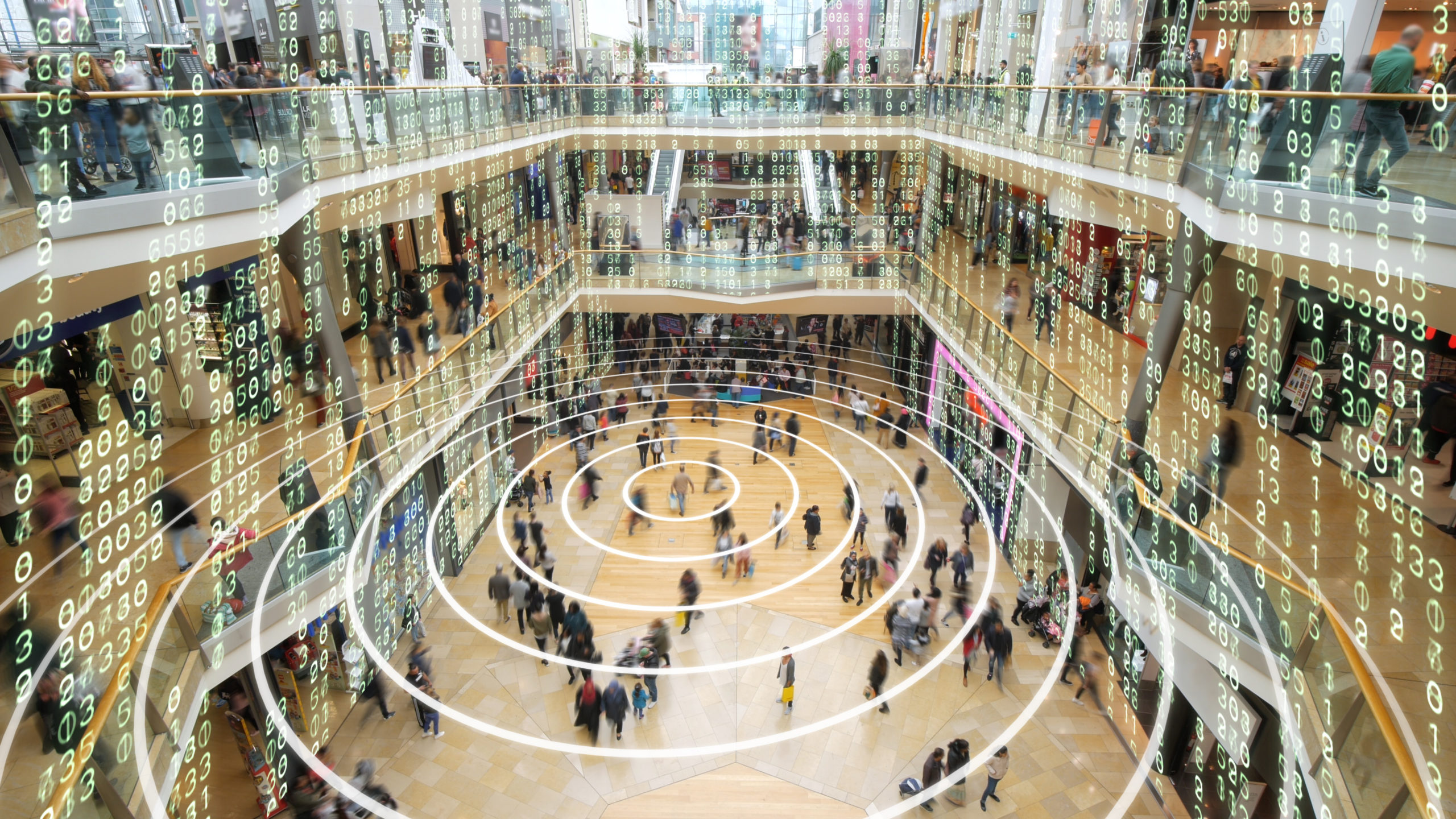What is Enterprise Internet of Things (IoT)?

1. What is IoT?
The Internet of Things (IoT) is a network of physical objects embedded with sensors, software, and other technologies for data connection and sharing with other devices and systems over the Internet. The Internet of Things technology is based on the logic that the goods or objects we use in our daily life exchange data with each other over the internet connection. Objects that are part of the system collect data from other units with the help of the sensors on them. Then, it transfers its data to other devices with systems such as Wi-Fi or Bluetooth. In this way, an internet-like network structure emerges. The technology that emerged with the internet of things has been used more and more actively with each passing day to meet both industrial and personal needs.
2. What is Enterprise IoT?
Enterprise IoT can be defined as the next phase of the Internet of Things concept. It is used to enable businesses to establish more connections, thereby increasing usage, reducing manual work, scaling business processes, and better planning, thus increasing operational efficiency, reducing operating costs, and becoming more efficient. That’s why more and more entrepreneurs are investing in connected physical products with embedded computing devices.
Enterprise Internet of Things can also be used to provide a better customer experience and to get more detailed large datasets to analyze. There are many ways that enterprise IoT can be applied to make daily business processes and employees more productive and efficient. It can be said that the possibilities offered by the IoT to businesses are almost unlimited and in line with their needs.
Leveraging a combination of technologies including embedded devices with sensors and actuators, internet-based communications, and cloud platforms, enterprise IoT applications can automate business processes dependent on contextual information provided by programmed devices such as machines, vehicles, intelligent devices, and other equipment. In addition, such enterprise IoT applications can also send control instructions to these devices based on certain business rules.
By connecting physical objects to the Internet with enterprise IoT investments, organizations can collect and transmit real-time data that they can use to make smarter business decisions and deliver more value to their customers. For example, a healthcare company can use IoT devices to track medical assets and monitor nurses to reduce operational burden. In addition, by remotely monitoring facility personnel, healthcare companies can quickly determine the location of their staff in real-time and track their daily activities & movement. Also, with IPERA’s cloud-based Wi-Fi & IoT software platform, you can use IoT devices for child tracking or employee tracking. By using IPERA, you can get live tracking by seeing historical logs. Thus, you can empower your venue app & enhance your visitor experience with Indoor IoT Solutions. From a single vendor like IPERA, you can get multiple enterprise use cases for indoor IoT services. IPERA’s IoT Platform also supports data collection, device communication, and all decision-making activities. Day after day, IoT systems are used extensively in many indoor areas for tracking and monitoring and have continued to be used.
3. How Does IoT Work?
An IoT ecosystem consists of web-enabled smart devices that use embedded processors, sensors, and communication hardware to collect, send, and act upon data from the environment. IoT devices share the data they collect from sensors by connecting to another device where it is sent to the cloud for analysis or analysis locally. Sometimes, these devices communicate with other related devices and act based on the information they receive from each other. Devices in the ecosystem can work without human intervention; at the same time, people can interact with the devices. For example, setting up devices, instructing the system, or accessing data. An IoT system operates on real-time data collection and data exchange. An IoT system has three components:
Smart devices: They are devices such as television, security camera, and exercise equipment, which have been given the ability to process.
IoT application: It is a set of services and software that integrates data from various IoT devices. This application uses machine learning or artificial intelligence (AI) technology to analyze data and make informed decisions.
A graphical user interface: A mobile app or website that can be used to enroll and control smart devices is a common example.
![]()
4. What are the Differences Between IoT for Enterprises and Regular IoT?
The Internet of Things (IoT) is a term that refers to physical objects such as computers, mobile phones, home appliances, and many other electronic devices embedded with sensors, software, and other technologies. For example, we can think of mobile phones, sensors, smartwatches, and air conditioners. We can think of Retractable BLE Wearable, Retractable BLE Asset Tags, Environment, Occupancy & Presence Sensors for common applications.
IoT for enterprises is defined as using the Internet of Things in sector applications. It refers to interconnected sensors and other networked devices. Let’s take Amazon warehouse, smart robots, and Airbus as examples.
5. What Are the Pros and Cons of IoT?
We can list the advantages of IoT as follows:
- It can help smarter control of homes and cities through mobile phones.
- Increases security and provides personal protection.
- It saves us a lot of time by automating activities.
- It detects any potential danger and warns users, so it is useful for security.
- IoT devices connect and communicate with each other and minimize human effort as it performs various tasks without the need for humans.
We can list the disadvantages of IoT as follows:
- Hackers can access the system and steal personal information. Because we add too many devices and personal data to the Internet, we risk our information being misused.
- People rely heavily on the Internet and cannot work effectively without the Internet.
- The overuse of the internet and technology is making people stupid and lazy as they rely on smart devices instead of doing physical work.
- Deploying IoT devices are very costly and time-consuming.
- These devices will completely control our lives and depend on technology.
6. What Are the Top Enterprise Use Cases of IoT Devices and Systems?
As more and more leading organizations make significant investments in the IoT space, the corporate IoT domain is beginning to spread.
6.1. IoT in Healthcare
There are already several vital use cases for IoT in healthcare. Hospitals and practices increasingly use connected sensors to improve employees’ productivity, enhance the guest experience, and ensure employee safety. Monitor personnel remotely, know the location of your staff in real-time, and track their daily activities & movement wherever they are. In real-time, remote patient monitoring systems know who needs help and their exact location.
IoT is also used to increase the efficiency of hospitals; for example, it ensures patients are attended to regularly by monitoring nurses’ regular visits thanks to the housekeeping panic button. Also, you can monitor toilets, gyms, and facilities’ cleanliness.
6.2. Smart Cities
Smart city technology is any IoT hardware or software system designed to make a city run more efficiently. A smart city initiative must improve a city’s operations, save money, continuously improve citizens’ quality of life and make people comfortable. For example, traffic lights and cameras connected to the IoT will be able to detect that there are too many cars at an intersection and automatically adjust the signal timing to improve the flow. Emergency vehicles will communicate directly with the connected traffic infrastructure, even from other cities, allowing you to report dangers or accidents on the road when you are stuck in traffic.
6.3. Public transport
Self-driving cars and autonomous public transport are examples of rapidly developing and used IoT initiatives. Connected vehicles are predicted to offer a more efficient and safe transportation system. Public transport fleets such as buses, taxis, delivery vans, freight trains, and subways will soon be able to communicate with each other, traffic signals, and infrastructure to avoid congestion, reduce accidents and save energy by regulating speed.
6.4. Real Estate – Smart Security
The Internet of Things has an impact that could revolutionize our entire infrastructure, including real estate. Just as smart homes are transforming consumer technology, they will transform security. Using the latest wireless technology, a home can detect intruders and notify residents if any windows or doors are open while they are out. This will help reduce crime rates and make people feel safe at home. It could also lead to new insurance policies for homeowners who can get a discount on their premiums by installing smart security systems.
6.5. Manufacturing
Factories utilize IoT devices to monitor production flow in real-time, optimizing material usage to eliminate waste and unnecessary work in processing inventory. Outfitting machines with IoT monitoring devices allows facility managers to monitor and manage equipment remotely. These monitoring devices can even be configured to send alerts when certain conditions are met to eliminate machine downtime, increase throughput, conserve energy and reduce costs.
7. What Technologies Have Made the IoT Possible?
The first application of the IoT took place in 1969 when the first bank withdrawal ATM was launched. Eventually, the concept became popular, and the internet of things became what it is today over the years. The Internet of Things is so widespread and used because of the complementary advances in hardware and software technologies and the constant change and evolution of human needs. IoT refers to the increasing number of devices connected to the global Internet. The convergence of some technology trends, especially recently, has made IoT possible:
The development of operating systems and protocols with a small footprint is one of the aspects that led to the development of IoT. Hardware requirements for lightweight versions of mainstream operating systems such as Windows and Linux have remained stable or dropped as the performance of embedded platforms has improved.
Wireless communication is very advanced nowadays. The acceleration of WiFi with each new addition to protocols has allowed the expansion of connectivity options for low-power devices in the industrial and consumer electronics markets.
Various types of sensors play an important role in IoT. As low-power and low-cost sensor technologies become readily available, IoT engineering services have become significantly easier.
A major reason that has helped the concept of IoT grow is the development of cloud computing platforms. These platforms allow businesses and consumers to take full advantage of their IoT infrastructure without having to manage it.
These trends have made the IoT possible by making it possible for everything to transmit data to or be controlled from the Internet at very little additional cost to our basic device.





